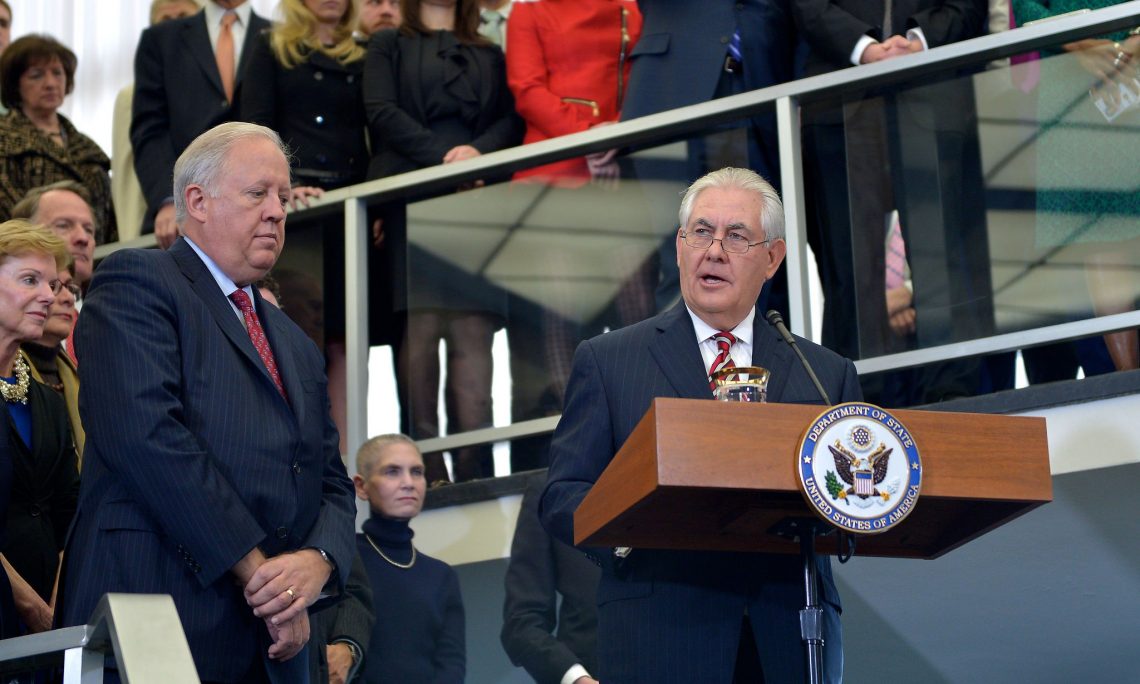by Diana Ohlbaum
When President Trump submitted his preliminary budget request for 2018, which outlined foreign aid and diplomacy cuts of nearly one-third, the rebuke was fast and furious. Members of Congress declared the president’s budget “dead on arrival.” Hearings on the budget produced “near consensus” against the cuts. Not just liberal Democrats and humanitarian do-gooders, but military leaders, Republican national security experts, right-leaning editorial boards, faith leaders, and conservative columnists proclaimed the importance of development assistance and, as one pundit put it, the “amorality and stupidity of eviscerating foreign-aid spending.”
It’s true that the budget proposal was more of a political document, laying out maximalist positions for public consumption, than a serious policy plan. But one thing is clear: in the end, significant cutbacks in foreign operations are all but inevitable. In this political environment, Congress will find it extremely difficult to spare the State Department and the U.S. Agency for International Development (USAID) from the budget axe. The question is not whether aid will be cut, but how and by how much.
Anyone familiar with the foreign policy bureaucracy could cite policies, programs, and positions that cost more than they’re worth. The problem is that there is little consensus on which ones. With their roots in the business world, President Trump and Secretary of State Rex Tillerson—to give them the benefit of the doubt—may believe that cuts will force hard choices that eliminate waste and improve efficiency. But that just shows how little they understand government.
Spending choices, as anyone familiar with Washington knows, are made largely for political reasons. Despite the lack of technical earmarking, Congress directs funds to programs that benefit companies in their districts or that lobbyists, advocacy organizations, and constituents favor. Presidents and high-ranking officials make commitments to support governments, sectors, and activities whose efficacy is not backed by facts and evidence. Food aid, for instance, is grown on U.S. farms and shipped on U.S.-flagged vessels, even though it would be far cheaper, faster, and better for poor countries if it were purchased nearby. But U.S. agricultural and shipping interests, including the associated unions, want their “cut.” Such alliances form the grease that allows the wheels of government to turn, and when push comes to shove, politically-motivated spending always survives.
Beyond pork-barrel politics, the most ineffective and wasteful programs rarely go under the knife for practical reasons. Even though tens of billions of dollars have been squandered on reconstruction efforts in Iraq and Afghanistan, fueling corruption and religious extremism, the United States continues to pour in money because it sees no other exit strategy for U.S. troops. It may well be that aid to Egypt and Pakistan would have been better spent if dollar bills had been dropped from airplanes, but no one in Washington is willing to take the hit for abandoning those governments (or for adopting unorthodox distribution methods).
To achieve reductions of the proposed magnitude, the Trump administration will need to close dozens of embassies, consulates, and USAID missions, pink-slip hundreds (or more) of federal employees, terminate contracts with U.S. businesses and nonprofits, and halt aid to some of the world’s poorest countries. The countries getting the most aid—Afghanistan, Israel, Egypt, Iraq, Jordan, and Pakistan—are unlikely to receive significant cuts due to their political and strategic importance, which means the preponderance of the burden will fall on smaller countries. Family planning and climate-change activities will be largely eliminated, with programs to protect human rights and strengthen democratic governance not far behind. Multilateral programs will suffer disproportionate cuts. Given that 2017 is expected to bring an unprecedented four famines—in South Sudan, northern Nigeria, Yemen, and Somalia, affecting more than 20 million people—whatever funds are left for long-term development could be diverted to urgent humanitarian relief.
The consequences of these choices will be felt immediately as well as over time. In the short term, cutbacks in family planning assistance and reproductive health care will mean increases in preventable child and maternal deaths. Underinvestment in conflict mitigation, democratic institution-building, and civil-society strengthening could make military intervention both more likely to occur and less likely to succeed. Multilateral banks and United Nations agencies, whose pooled resources help the United States to leverage its funds and influence, will be left holding the bag as U.S. arrears spur other countries to renege on their commitments. And continuing to ignore the worst famine since 1945 will mean humanitarian catastrophe.
Over the longer-term, USAID staffing reductions will decimate in-house capacity to plan, manage, and monitor overseas programs and spending, heightening the risk that taxpayer funds will fall prey to waste and corruption. Equally important, the loss of U.S. outposts around the world will mean diminished services to U.S. citizens when they travel, as well as less information, fewer contacts, and weaker relationships for the U.S. government in conducting foreign policy. Not having civilian eyes, ears, and voices on the ground deprives the United States of the relationships it needs to understand, influence, and respond effectively to dynamic situations.
By listening to career staff at the foreign policy agencies, consulting with Congress, and soliciting public feedback, the administration could cut low-priority and poor-performing programs, match staff and resources to meet current requirements, and identify legal and procedural hurdles to greater efficiency and effectiveness. That, in fact, was the purpose of doing a Quadrennial Diplomacy and Development Review in 2010 and 2015. Resorting instead to willy-nilly cuts uninformed by facts and evidence, or defaulting to deep across-the-board reductions, will only erode U.S. national security, escalate costs to U.S. taxpayers, and contravene American values.
This is the first of four articles on how U.S. soft power ends. The second, on dismantling USAID, can be found here. The third, on disparaging diplomacy, can be found here. The fourth, on foreign aid reform, can be found here. Photo: Rex Tillerson delivers welcome remarks at the State Department (Wikimedia Commons).





